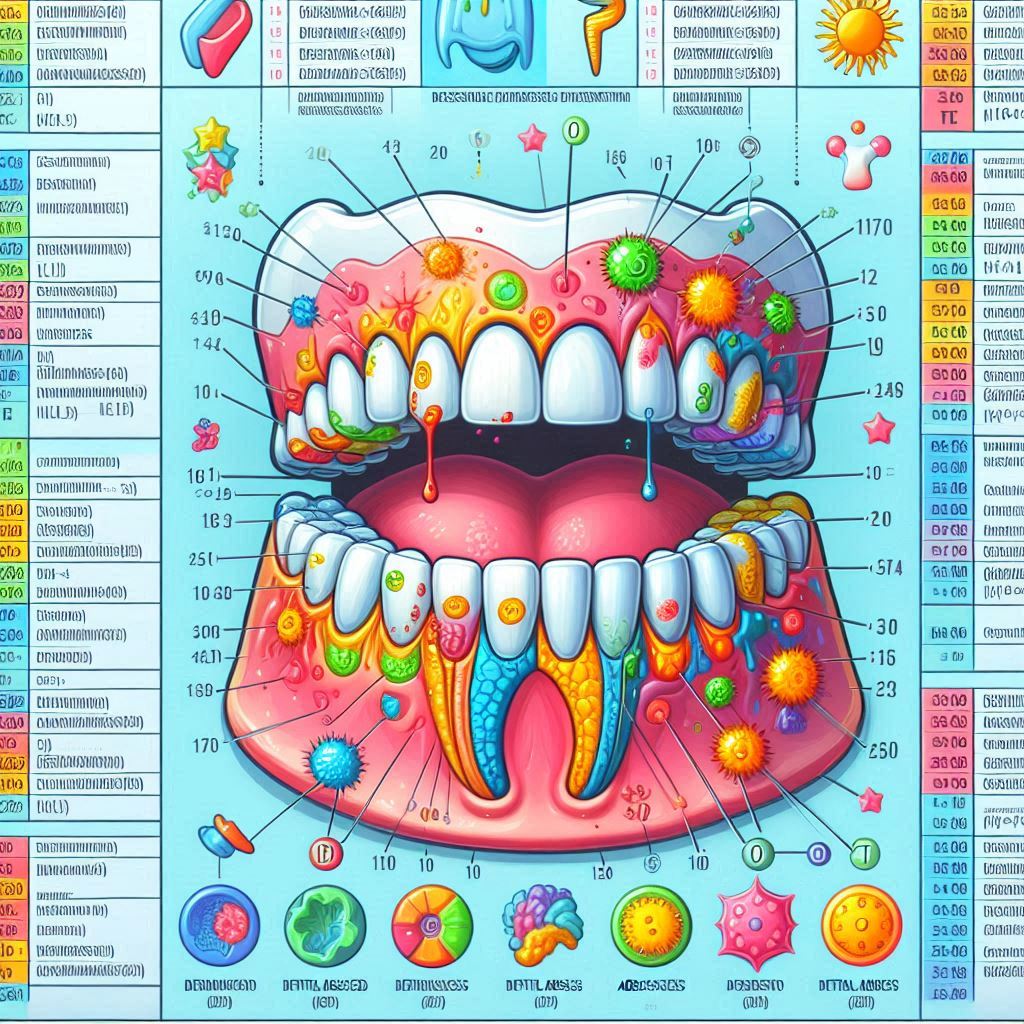Understanding ICD-10 Codes for Dental Abscess
Dental abscesses are a common yet potentially serious condition that can affect individuals of all ages. They occur when a bacterial infection leads to the accumulation of pus in the teeth or gums, causing pain, swelling, and sometimes systemic symptoms like fever. Proper diagnosis and coding of dental abscesses are crucial for effective treatment and accurate medical billing. The International Classification of Diseases, 10th Revision (ICD-10), provides specific codes for various types of dental abscesses, including unspecified cases, those in children, and those complicated by facial cellulitis. This article delves into the intricacies of these ICD-10 codes, offering a detailed guide for healthcare professionals, coders, and anyone interested in understanding this important aspect of dental health.

ICD-10 Code for Dental Abscess Unspecified
What is a Dental Abscess?
A dental abscess is a localized collection of pus associated with a tooth. It can occur in different parts of the tooth, including the periapical area (at the tip of the root), the periodontal area (in the gums), or even in the bone surrounding the tooth. The most common cause is bacterial infection, often resulting from untreated dental cavities, trauma, or failed dental work.
ICD-10 Code: K04.7
The ICD-10 code for an unspecified dental abscess is K04.7. This code is used when the abscess is not specified as periapical, periodontal, or another specific type. It falls under the broader category of “Diseases of pulp and periapical tissues” (K04).
Clinical Scenarios for K04.7
- Patient Presentation: A patient presents with severe tooth pain, swelling, and pus discharge. The dentist diagnoses a dental abscess but does not specify the type.
- Documentation Requirements: The medical record should clearly indicate the presence of a dental abscess without specifying the exact type.
ICD-10 Code for Dental Abscess Unspecified
| ICD-10 Code | Description | Clinical Scenario |
|---|---|---|
| K04.7 | Periapical abscess without sinus | Unspecified dental abscess, not further classified |
ICD-10 Code for Dental Abscess in Children
Dental Abscess in Children: A Unique Challenge
Children are particularly susceptible to dental abscesses due to their developing teeth, dietary habits, and sometimes inadequate oral hygiene. The presentation in children can be more acute, with rapid progression and systemic symptoms like fever and malaise.
ICD-10 Code: K04.7
Interestingly, the ICD-10 code for a dental abscess in children is the same as for adults: K04.7. However, the clinical approach and documentation may differ, especially when considering the child’s age, developmental stage, and potential complications.
Clinical Scenarios for K04.7 in Children
- Patient Presentation: A 7-year-old child presents with a swollen cheek, fever, and refusal to eat. The dentist diagnoses a dental abscess.
- Documentation Requirements: The medical record should note the child’s age and any specific considerations, such as the need for pediatric dental intervention.
Table 2: ICD-10 Code for Dental Abscess in Children
| ICD-10 Code | Description | Clinical Scenario |
|---|---|---|
| K04.7 | Periapical abscess without sinus | Dental abscess in a child, not further classified |
ICD-10 Code for Dental Abscess with Facial Cellulitis
What is Facial Cellulitis?
Facial cellulitis is a serious complication of a dental abscess where the infection spreads to the soft tissues of the face. This condition requires immediate medical attention as it can lead to life-threatening complications like sepsis or cavernous sinus thrombosis.
ICD-10 Code: K12.2
The ICD-10 code for a dental abscess with facial cellulitis is K12.2. This code falls under the category of “Cellulitis and abscess of mouth” (K12).
Clinical Scenarios for K12.2
- Patient Presentation: A patient presents with a swollen face, fever, and a painful, pus-filled tooth. The dentist diagnoses a dental abscess with facial cellulitis.
- Documentation Requirements: The medical record should clearly indicate the presence of both the dental abscess and facial cellulitis.
ICD-10 Code for Dental Abscess with Facial Cellulitis
| ICD-10 Code | Description | Clinical Scenario |
|---|---|---|
| K12.2 | Cellulitis and abscess of mouth | Dental abscess with facial cellulitis |
Conclusion
Understanding the ICD-10 codes for dental abscesses is essential for accurate diagnosis, treatment, and billing. Whether dealing with an unspecified abscess, one in a child, or a complicated case with facial cellulitis, proper coding ensures that patients receive the care they need while healthcare providers are appropriately compensated.
FAQs
1. What is the ICD-10 code for a periapical abscess?
- The ICD-10 code for a periapical abscess is K04.7.
2. Can the same ICD-10 code be used for children and adults?
- Yes, the ICD-10 code K04.7 is used for both children and adults with an unspecified dental abscess.
3. What is the ICD-10 code for a dental abscess with facial cellulitis?
- The ICD-10 code for a dental abscess with facial cellulitis is K12.2.
4. How is a dental abscess treated?
- Treatment typically involves draining the abscess, antibiotics, and addressing the underlying cause, such as a cavity or gum disease.
5. What are the complications of a dental abscess?
- Complications can include facial cellulitis, sepsis, and in severe cases, life-threatening conditions like cavernous sinus thrombosis.
By understanding these ICD-10 codes and their applications, healthcare professionals can ensure accurate documentation and effective patient care.


